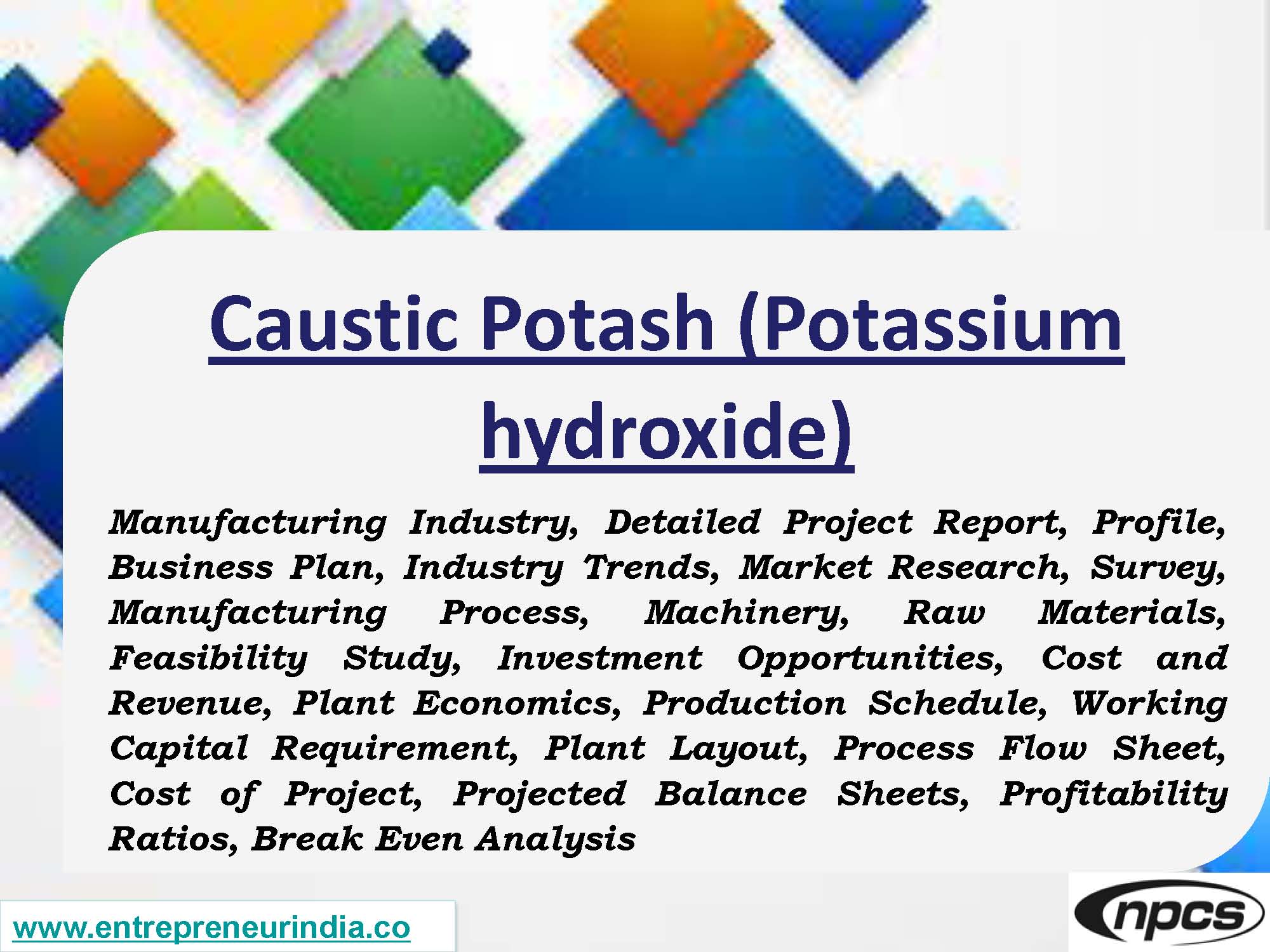
Caustic potash, also known as potassium hydroxide (KOH), plays a critical role in multiple industries, from agriculture and textiles to pharmaceuticals and soaps. Its strong alkaline nature makes it indispensable in manufacturing and chemical processing. The caustic potash manufacturing process requires careful control and advanced technology to ensure high purity and safe handling. Moreover, growing industrial demand has driven the need for detailed project planning, process optimization, and environmental compliance. Whether it’s for small-scale production or large industrial plants, understanding the end-to-end process of caustic potash production is essential for efficiency, quality, and sustainability.
Overview of the Caustic Potash Manufacturing Process
The caustic potash manufacturing process involves converting potassium chloride (KCl) into potassium hydroxide through electrolysis. This is typically carried out in a membrane cell, which separates chlorine and hydrogen gases while forming caustic potash in the electrolyte solution. The process requires a consistent power supply and high-purity raw materials. Moreover, careful control of temperature, voltage, and brine concentration ensures maximum yield and efficiency. As environmental standards tighten, newer technologies focus on energy conservation and byproduct recycling. From raw material preparation to packaging, each phase contributes to the safe and sustainable production of caustic potash.
See Also : Cold Storage
Raw Materials and Electrolytic Cell Design
The process begins with dissolving potassium chloride in water to create a brine solution, which is then purified to remove calcium and magnesium ions. This purified brine is fed into an electrolytic cell, where electricity splits it into chlorine gas at the anode and hydrogen gas at the cathode, leaving caustic potash in the solution. Membrane cell technology is the most widely used because it ensures high product purity and minimizes environmental hazards. In caustic potash manufacturing, selecting the right cell design directly impacts cost, efficiency, and product quality.
Project Planning and Feasibility Report
Before establishing a production facility, conducting a detailed project report is essential. This report outlines capital investment, raw material sourcing, plant layout, equipment costs, energy requirements, and environmental management plans. Moreover, it includes financial projections like break-even analysis, ROI, and payback periods. A well-researched feasibility report helps stakeholders assess risks and make informed decisions. In caustic potash manufacturing, project planning not only determines the economic viability but also ensures compliance with health, safety, and environmental regulations from the outset.
Environmental Considerations and Waste Management
Caustic potash production generates byproducts like chlorine gas, which must be handled carefully to prevent environmental and health hazards. Modern plants use gas scrubbers and closed systems to capture and reuse chlorine, reducing emissions. Moreover, wastewater treatment systems are integrated to neutralize alkaline discharge before disposal. Sustainable caustic potash manufacturing also considers energy usage and carbon footprint, encouraging the adoption of solar power or other renewable energy sources. Effective environmental planning enhances the industry’s reputation and aligns with global sustainability goals.
Read More :Paper Composite Can
Conclusion
In conclusion, successful caustic potash manufacturing depends on advanced technology, rigorous process control, and comprehensive project planning. From raw material selection and electrolysis to waste management and feasibility studies, each element plays a vital role in achieving product quality and operational efficiency. Moreover, as global demand increases and environmental standards evolve, manufacturers must stay agile and responsible. A thorough understanding of the process and a strong project foundation not only ensure profitability but also contribute to sustainable industrial development.





